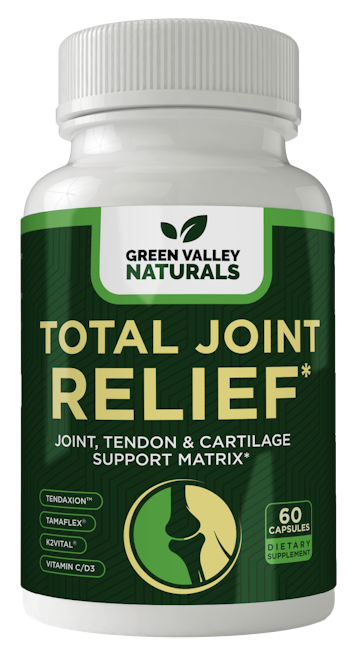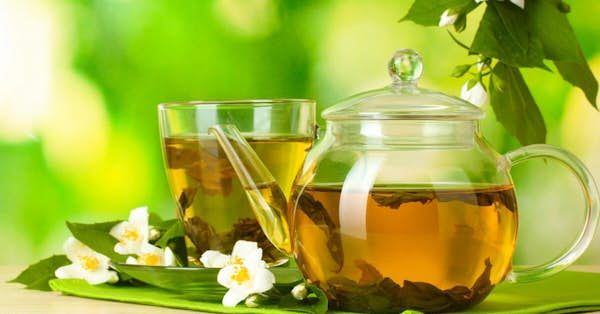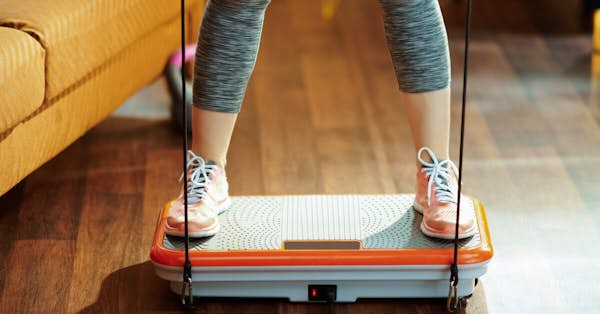
Muscling Your Way Into Vibrant "Old" Age: How To Stop Muscle Loss With Age
Today there are so many wonderful examples of people who have remained physically strong, energetic and mentally sharp into their 80’s, 90’s and beyond. Whether it’s due to great genes, a healthy lifestyle—or both—these people look and act years younger than their true age. Now, the latest research is pinpointing at least one thing that many of these folks have in common: strong, capable muscles and higher muscle mass.
When we talk about muscles, we're not talking about the extreme muscular obsessions of bodybuilding. Instead, we're talking about maintaining youthful muscle mass and strength that provides enough power to carry out day-to-day tasks on your own, avoid disastrous falls, muscle weakness and dodge other physical issues that can ruin your independence as you get older.
Key Takeaways
Maintaining youthful muscle mass and strength is vital for independence, preventing falls, and avoiding physical issues in old age. Muscle loss, or sarcopenia, starts as early as the 30s. It leads to reduced mobility and increased risk of fall-related injuries.
Exercise training and physical activity like balance training, flexibility and cardiovascular exercises are essential to curb low muscle mass and the natural aging process.
Nutrition can help increase muscle mass. Nutrients such as tomatidine, ursolic acid and HMB (beta-hydroxy-beta-methylbutyrate) can help in building muscle mass and improve physical performance.
Age-Related Muscle Loss is Very Common

It's easy to lose muscle mass as you age. In fact, muscle loss can be a common and very serious consequence of aging. And sadly, the process begins in your 30’s! So, the sooner you start doing something about loss of muscle mass the better.
Muscle loss is called sarcopenia. It's defined as the age-related, involuntary loss of skeletal muscle mass and strength, which begins as early as the 3rd decade of life. Sarcopenia can lead to reduced mobility, diminished quality of life, and increased risk of fall-related injuries.
Adequate nutrition and targeted exercise are the gold standard for therapy for muscle loss and sarcopenia. Here are effective workout routines and guidelines tailored for older adults:
Types of Exercises To Encourage Muscle Growth:
-
- Key Exercises: Include free weights, machine weights, or resistance training bands. Focus on major muscle groups like legs, hips, back, chest, abdomen, shoulders, and arms.
- Examples: Squats, leg presses, chest presses, bicep curls, tricep extensions, shoulder presses, and rows.
Balance Training:
- Examples: Standing on one foot, heel-to-toe walk, tai chi.
Flexibility Exercises:
- Examples: Stretching routines, yoga.
Cardiovascular Exercises:
- Low Impact Options: Walking, swimming, cycling, or using an elliptical machine.
Frequency:
Strength Training Exercises or Resistance Training: Aim for at least 2-3 times per week. Each session should target different muscle groups to allow for recovery.
Balance Training: Can be practiced daily, especially as part of a warm-up or cool-down routine.
Flexibility Exercises: Daily stretching is beneficial. Incorporate it into your daily routine or as part of your workout sessions.
Cardiovascular Exercises: Aim for at least 150 minutes of moderate-intensity aerobic activity per week, or 75 minutes of vigorous-intensity activity, as recommended by the American Heart Association.
Intensity:
Strength Training Exercises: Use a weight or resistance level heavy enough to tire your muscles after about 12 to 15 repetitions. Older adults should start with lighter weights and gradually increase. You can also use resistance training...
Balance and Flexibility Exercises: Should be performed at a comfortable intensity, focusing on gentle stretching and maintaining balance without strain.
Cardiovascular Exercises: Moderate intensity where you can talk but not sing during the activity is a good guideline. Activities like brisk walking or swimming are ideal.
Duration:
Strength Training Exercises or Resistance Training: Each session should last at least 20-30 minutes, including a mix of different exercises.
Balance Training: Around 10-15 minutes per session.
Flexibility Exercises: Stretching for 10-15 minutes can be effective.
Cardiovascular Exercises: Ideally, spread your activity throughout the week. Sessions can be broken down into 10-minute segments if needed.
Additional Tips:
Warm-Up and Cool-Down: Always start with a warm-up (like walking or gentle stretching) for at least 5-10 minutes and end with a cool-down period to prevent injuries.
Progress Gradually: Increase the intensity and duration of your workouts gradually to avoid overexertion or injury.
Listen to Your Body: Pay attention to how your body feels during and after exercises. If something hurts or feels wrong, modify or skip that exercise. It's important to distinguish between muscle fatigue and pain.
Stay Hydrated: Drink plenty of fluids before, during, and after your workout to avoid dehydration.
Nutrition: Ensure adequate protein intake to help maintain and build muscle mass.
Consult Healthcare Providers: Before starting any new exercise routine, especially if you have existing health conditions or concerns.
Safety First: Use proper form and technique to prevent injuries. Consider working with a fitness professional initially to learn the correct form.
Group Classes or Activities: Consider joining group classes tailored for older adults. These can provide social interaction and structured routines.
Rest and Recovery: Adequate rest between strength training sessions is crucial for muscle recovery and growth.
Balance Variety and Consistency: While it's important to keep your routine interesting, consistency in following a regular exercise schedule is key to maintaining muscle mass.
By incorporating these types of exercises into a regular workout routine, you can effectively maintain your muscle mass, improve your overall health, and enhance your quality of life. Remember, the best exercise routine is one that is sustainable and enjoyable for you-- and one that you'll actually do!
But it's only the beginning of what you can do to combat muscle weakness and muscle loss....
Fortunately, the latest research has uncovered nutrients that can help you stay clear of both muscle atrophy and frailty that limits the activities of more than 30 million older Americans. Scientists say that along with some exercises like light weightlifting, getting these nutrients into your meals may help you stay fit for longer, and may even increase your longevity.
The Muscle-Saving Power of Tomatidine and Ursolic Acid
A nutrient called tomatidine, found in unripe, green tomatoes, and a natural chemical called ursolic acid, found in apples, can help you stop or at least slow down the withering of muscle tissue.
According to researchers at the University of Iowa, one of the molecular villains in the aging process that reduces muscle is a "transcription factor" (a protein that affects gene behavior) called ATF4. This factor has an epigenetic effect – altering DNA activity – that causes cells in muscle fibers to assemble fewer muscle proteins so that muscle strength and size shrink. However, the Iowa researchers have discovered that both ursolic acid and tomatidine push back against this shrinking process and counteract the muscle-wasting effects of ATF4.
As a matter of fact, in their lab tests on animals, researchers found that the compounds can make old muscles behave like young muscles, increasing muscle size by ten percent and boosting muscle strength by a whopping 30 percent. Those are numbers that might make Popeye switch from spinach to apples and green tomatoes!
Making Mitochondria Mightier
Another benefit to these natural chemicals is the way they improve the function of mitochondria, the energy-producing organelles in muscle tissue.
Tests in Asia show that ursolic acid stimulates the addition of new mitochondria in muscle, and, in so doing, helps improve both muscle power and endurance. Added to that, research in Scandinavia in conjunction with the U.S. National Institute on Aging shows that tomatidine enhances the removal of malfunctioning mitochondria in a process called mitophagy.
As a result, tomatidine improves muscle function, strength and stamina. Other potential benefits still being studied include:
Helping weight loss and improving nonalcoholic fatty liver disease (NAFLD): Lab tests in Taiwan show that tomatidine may reduce body fat and lower weight while removing harmful, inflammatory fat from the liver. Right now it is estimated that 25 percent of Americans have NAFLD. It is the most common chronic liver disease.
Reducing joint damage from osteoarthritis: Lab tests show tomatidine may protect cartilage and limit the inflammation that develops during osteoarthritis.
Lowering the risk of bone cancer: Studies show that tomatidine may keep osteosarcoma, the most common type of bone cancer, from spreading in the body. It appears to do this by altering the chemical signals released by the cancer cells.
But it's only the beginning of the nutritional support available to help you stay strong and active as you get older.
The Athlete's Secret to Boost Muscle Mass: HMB Supplements
Several research groups have shown that a supplemental HMB (beta-hydroxy-beta-methylbutyrate) can help. HMB, also known by many other names such as beta hydroxy (β hydroxy) and hydroxy beta methylbutyrate (hydroxy βmethylbutyrate HMB), can help preserve and even build muscle mass.
What is HMB?
HMB is a metabolite of amino acids-- the essential amino acid leucine to be exact-- that both protects against muscle protein breakdown (called muscle catabolism) and at the same time activates key protein synthesis pathways to increase muscle tissue growth (called muscle anabolism).
Athletes have long used HMB supplements to enhance skeletal muscle uptake of protein and recover more quickly after training or competition. In fact, studies have shown that HMB appears to reduce muscle protein breakdown and muscle damage after high-intensity exercise.
How can this help older folks?
HMB: Miracle muscle building supplement
This is important because the processes of muscle breakdown and growth are no longer equal as you get older. You see, with aging, muscle protein breaks down faster than new muscle protein synthesis, or growth. This is what causes a natural loss of muscle mass and the natural gain in fat mass.
The two-pronged action of HMB can stimulate protein synthesis and has beneficial effects on body composition, specifically muscle mass, muscle strength, and muscle function.
HMB and muscle growth
HMB has been the subject of numerous studies investigating its potential effects on muscle mass, strength, and exercise performance. Some of the findings from scientific research on HMB and muscle growth include:
- Improved Muscle Protein Synthesis: HMB has been shown to stop muscle loss by slowing protein breakdown and inducing muscle protein synthesis, which is the process by which muscles repair and grow after exercise. This effect can be beneficial for promoting muscle recovery and growth.
- Better Muscle Strength and Power: Several studies suggest that HMB supplementation may improve muscle strength and power, particularly in resistance-trained individuals and during high-intensity activities.
- Faster Muscle Recovery: HMB has been investigated for its potential to reduce muscle damage and inflammation after intense exercise, leading to faster recovery and reduced muscle soreness. This is one of the reasons so many athletes are always talking about HMB and muscle growth.
Leaner Body Mass: Some research suggests that HMB decreased body fat and can help preserve and increase lean body mass, which is also essential for athletes seeking to improve body composition.
HMB: How to Build Muscle Mass After 40, 50, 60, 70
But athletes aren't the only ones who can benefit. Among the HMB supplementation studies is a double-blind trial carried out by the University of Nottingham, England. The team found benefits in muscle cells and body composition in male seniors taking a dietary supplement of HMB on top of resistance training over six weeks.
Only those taking the dietary supplements saw an improvement in thigh mass and an increase in muscle protein synthesis compared to those taking the placebo. They concluded that “supplementation may result in long term benefits...”
What's more, the resistance exercise training isn’t necessary to increase muscle growth, muscle mass and muscle strength.
Works to Build Muscle Mass Even Without Exercise
A six-month double-blind trial in seniors carried out by researchers at the University of Central Florida concluded that HMB taken on its own, without resistance exercise training, “enhances strength and MQ (muscle quality)…thereby supporting its potential as a nutritional intervention to prevent sarcopenia and its associated functional decline in people as they age.”
After reviewing the literature, researchers from Italy proposed that “HMB may be utilized to protect or rebuild muscle mass in older people with reduced lean body mass.”
A review of clinical trials published in 2021 concluded that “HMB (beta-hydroxy-beta-methylbutyrate) has a positive effect on body composition and strength, especially in bedridden or sedentary elderly…”
That's why here at Green Valley Naturals we developed Bone & Muscle Defense, using a superior, patented form of HMB (beta-hydroxy-beta-methylbutyrate) called myHMB®️.
Take Advantage of Bone & Muscle Defense
Derived from the amino acid leucine, myHMB®️ is a highly concentrated, proprietary breakthrough in muscle support and protection. Along with myHMB®️, Bone & Muscle Defense also contains clinical dosages of Vitamin D3 and the patented nutrient OsteoSine®, to support healthy bones, and is rounded out with a patented form of K2 called K2Vital®, Magnesium, and L-Carnitine, for the most complete bone and muscle support formulation available today.
Whether you're still an active weekend warrior wanting to increase protein synthesis to build or protect muscle mass, or you're beginning to fall victim to age-related muscle loss and health problems, the benefits of HMB supplementation with Bone & Muscle Defense can be a game changer.
Loss of Muscle Mass is an Urgent Problem
According to researchers, if you don't start addressing muscle loss early in the aging game, your muscles will make their move – and leave permanently. In fact, from age 30 to 60, most people lose up to five percent of their muscle mass every decade. Then, loss of muscle mass only gets worse as you enter your 60’s.
The message? Undertake a regular exercise program and consume muscle building nutrients regularly. In addition to supplementing with Bone & Muscle Defense, you can get the other nutrients, such as tomatidine, in red, ripe tomatoes (a bit anyway) and even more in green, unripe tomatoes. And while the most well-known preparation of green tomatoes is frying, you can actually eat them the same way you eat red tomatoes – put them on sandwiches or cook them in spaghetti sauce. As for ursolic acid, which is found in apples, most of it is in the peels. So don't peel those apples!
Summary
Stopping muscle loss with age is of critical importance to preserve independence and vitality as you get older. Muscle loss, known as sarcopenia, begins as early as your 30s and can lead to reduced mobility and increased injury risk. A combination of strength training, balance exercises, flexibility routines, and cardiovascular activities can combat muscle loss. Nutrition is also essential for maintaining muscle mass, specifically HMB (beta-hydroxy-beta-methylbutyrate) in Bone & Muscle Defense as well as the nutrients tomatidine and ursolic acid, which are found in green tomatoes and apple peels, respectively. These nutrients are shown to counteract muscle-wasting effects and improve mitochondrial function, which can help in muscle maintenance and overall health.
Frequently Asked Questions
Why do you lose muscle as you age?
The decline in muscle mass and function is due to changes in skeletal muscle, including the loss of motoneurons and reduced protein synthesis
Can muscle loss due to aging be reversed?
Yes. Adequate nutrition including tomatidine, ursolic acid, and HMB (beta-hydroxy-beta-methylbutyrate) as well as targeted exercise are the gold standard for therapy. While you may not be able to completely reverse muscle loss, you can still significantly improve muscle strength, function, and quality of life through exercise and targeted nutrition.
How do you stop losing muscle as you age?
Maintaining muscle mass as you age begins with your diet and exercise regimen. Start with eating adequate protein and ensuring your diet is filled with muscle-building nutrients including tomatidine, ursolic acid, and HMB (beta-hydroxy-beta-methylbutyrate). Also take part in a regular exercise regimen such as resistance training or weight lifting to build muscle mass and strength.
Can elderly regain muscle mass?
Maintaining youthful muscle mass and strength is vital for independence, preventing falls, and avoiding physical issues in old age. Muscle loss, or sarcopenia, starts as early as the 30s. It leads to reduced mobility and increased risk of fall-related injuries. Exercise training and physical activity like balance training, flexibility and cardiovascular exercises are essential to curb low muscle mass and the natural aging process. Nutrition can help increase muscle mass. Nutrients such as tomatidine, ursolic acid and HMB (beta-hydroxy-beta-methylbutyrate) can help in building muscle mass and improve physical performance.
Ebert SM, et al. Activating transcription factor 4 (ATF4) promotes skeletal muscle atrophy by forming a heterodimer with the transcriptional regulator C/EBPβ. J Biol Chem. 2020 Feb 28;295(9):2787-2803. doi: 10.1074/jbc.RA119.012095. Epub 2020 Jan 17.PMID: 31953319
Marcotte GR, et al. GADD45A is a mediator of mitochondrial loss, atrophy, and weakness in skeletal muscle.JCI Insight. 2023 Nov 22;8(22):e171772. doi: 10.1172/jci.insight.171772.PMID: 37815864
Larsson, L.,Sarcopenia: Aging-Related Loss of Muscle Mass and Function. Physiol Rev. 2019 Jan 1; 99(1): 427–511. Published online 2018 Nov 14. PMCID: PMC6442923. https://www.ncbi.nlm.nih.gov/pmc/articles/PMC6442923/
Fang, E.F., et al. Tomatidine enhances lifespan and healthspan in C. elegans through mitophagy induction via the SKN-1/Nrf2 pathway. Sci Rep. 2017; 7: 46208. Published online 2017 Apr 11. doi: 10.1038/srep46208. https://www.ncbi.nlm.nih.gov/pmc/articles/PMC5387417/
Harvard Health Publishing. Harvard Medical School. Age and Muscle Loss. February 2023. https://www.health.harvard.edu/exercise-and-fitness/age-and-muscle-loss
Wu, S., et al. Tomatidine ameliorates obesity-induced nonalcoholic fatty liver disease in mice. Nutr Biochem. 2021 May:91:108602. doi: 10.1016/j.jnutbio.2021.108602. Epub 2021 Feb 3. https://pubmed.ncbi.nlm.nih.gov/33548473/
Xiang, C., et al. Tomatidine suppresses inflammation in primary articular chondrocytes and attenuates cartilage degradation in osteoarthritic rats. Aging (Albany NY). 2020 Jul 5;12(13):12799-12811. doi: 10.18632/aging.103222.Epub 2020 Jul 5. https://pubmed.ncbi.nlm.nih.gov/32628132
Hsieh, M., et al. Tomatidine Represses Invasion and Migration of Human Osteosarcoma U2OS and HOS Cells by Suppression of Presenilin 1 and c-Raf-MEK-ERK Pathway. Molecules. 2020 Jan 13;25(2):326. doi: 10.3390/molecules25020326. https://pubmed.ncbi.nlm.nih.gov/31941156/



